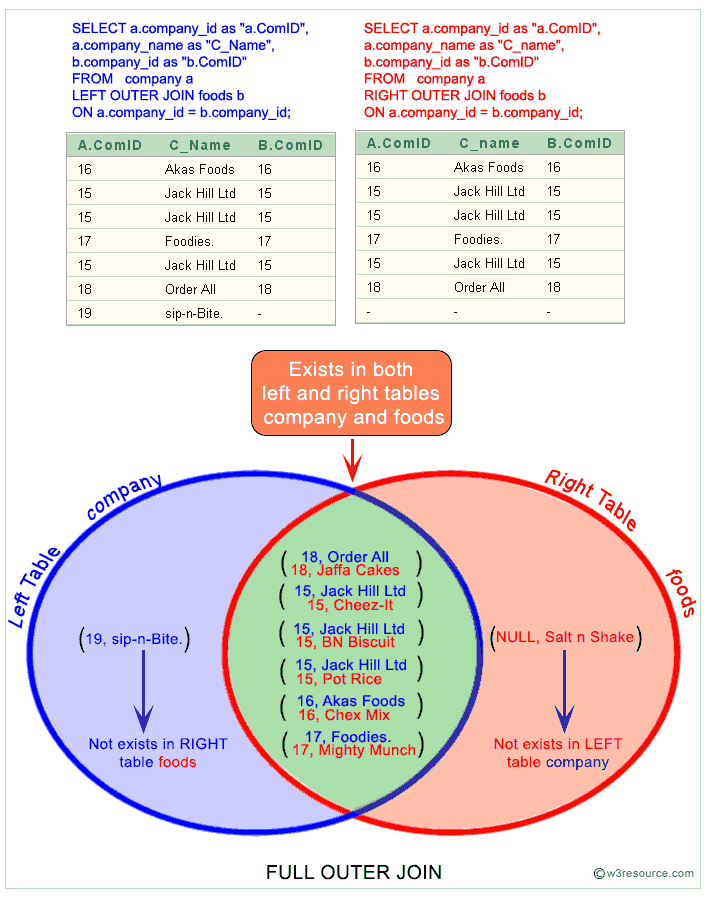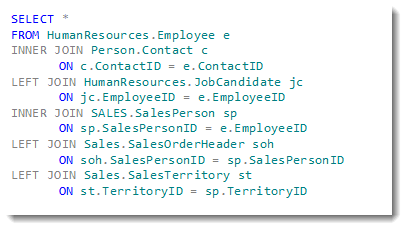Oracle FULL OUTER JOIN : A full outer join is such a join that performs a join between two tables that returns the of an INNER join as well as the of a left and right outer join. This tutorial explains FULL OUTER JOIN and uses in Oracle. SQL FULL OUTER JOIN Keyword. The FULL OUTER JOIN keyword returns all records when there is a match in left (table1) or right (table2) table records.
Note: FULL OUTER JOIN can potentially return very large result-sets! Tip: FULL OUTER JOIN and FULL JOIN are the same. In some databases, the FULL OUTER JOIN keywords are replaced with FULL JOIN. In this visual diagram, the Oracle FULL OUTER JOIN returns the shaded area: The Oracle FULL OUTER JOIN would return the all records from both tableand table2.
For each row in the Ttable, the full outer join compares it with every row in the Ttable. If rows from both tables meet the join _condition, the full outer join includes columns of both rows in the result set. We say that the row in Ttable matches with the row in the Ttable in this case. You can use outer joins to fill gaps in sparse data.
CompanyName FROM Customer C FULL JOIN Supplier S ON C. Country AS SupplierCountry, S. If there is a conventional match it is made. Syntax diagram - FULL OUTER JOIN. Let’s combine the same two tables using a full join.
What is a fuller outer join? How to create a FULL OUTER JOIN in access? Learn how to use left and right joins using the plus sign in an Oracle database. In theory, a full outer join is the combination of a left join and a right join.

In this tutorial, you have learned how to use the Oracle LEFT JOIN clause to retrieve data from multiple tables. Oracle SQL has several joins syntax variations for outer joins. John Garmany: For example, if I list my authors and the books they have written, I get the below. Full outer join or full join.
Just to clarify, for anyone who might not know, a full outer join consists of the union of all possible outer joins. A LEFT OUTER JOIN is one of the JOIN operations that allow you to specify a join clause. It preserves the unmatched rows from the first (left) table, joining them with a NULL row in the shape of the second (right) table. A full outer join , or full join , which is not supported by the popular MySQL database management system, combines and returns all data from two or more tables, regardless of whether there is shared information.

Think of a full join as simply duplicating all the specified information, but in one table, rather than multiple tables. Outer joins can be a left, a right, or full outer join. Joins and Unions can be used to combine data from one or more tables. The difference lies in how the data is combined. In simple terms, joins combine data into new columns.
If two tables are joined together, then the data from the first table is shown in one set of column alongside the second. FROM cities, countries WHERE cities. An outer join is similar to equijoin but it gets also the non-matched rows from the table. Summary: in this tutorial, you will learn how to use the SQL Server FULL OUTER JOIN to query data from two or more tables.
Introduction to SQL Server full outer join. Need SQL outer join help with tables. That is one way you could write it in T- SQL , and I think it will work in Oracle too.
Nincsenek megjegyzések:
Megjegyzés küldése
Megjegyzés: Megjegyzéseket csak a blog tagjai írhatnak a blogba.